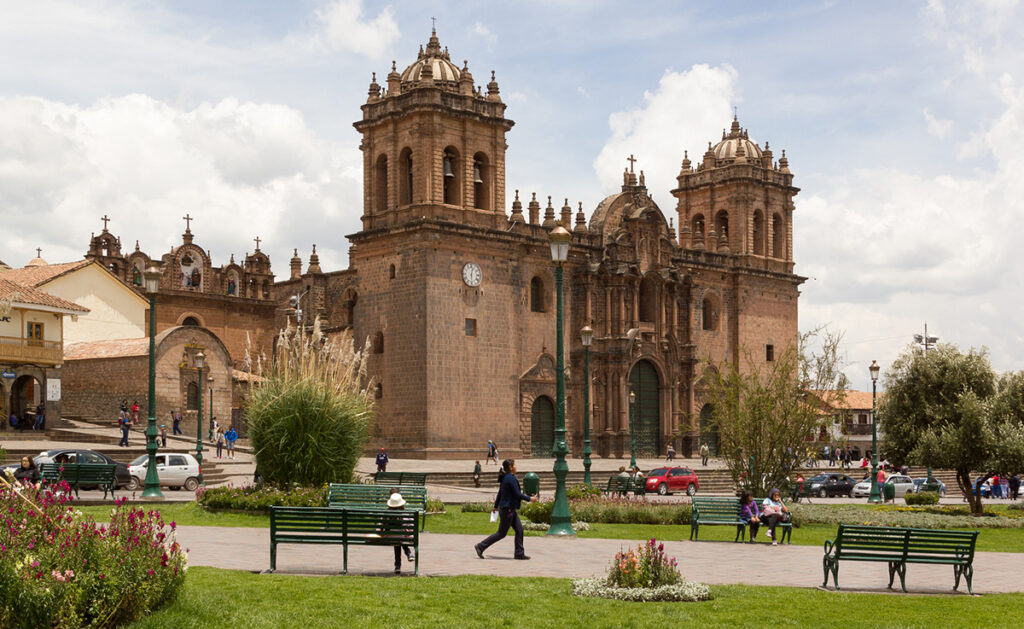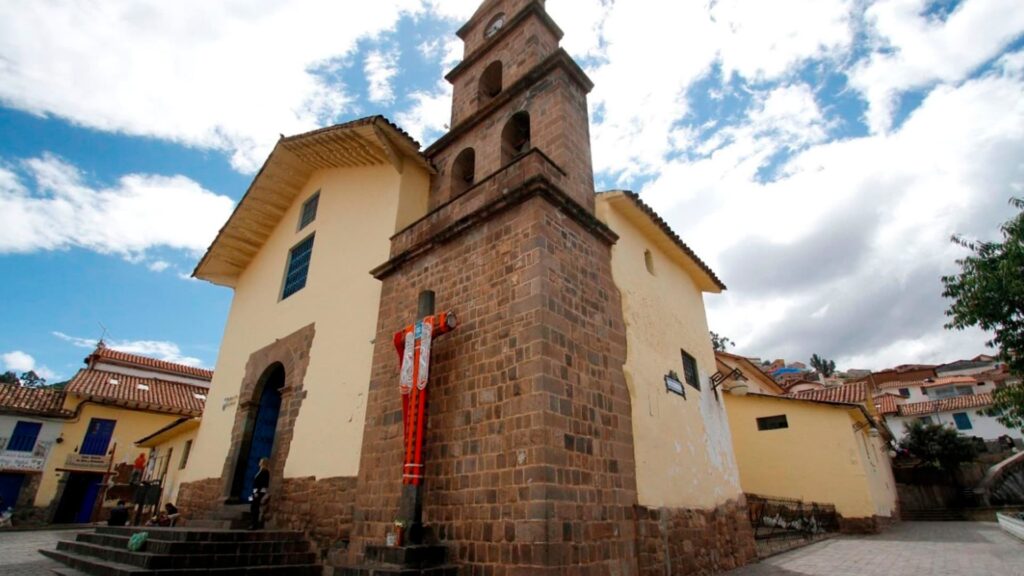Diego Quispe Tito is one of Peru’s most celebrated artists. He is known for his stunning paintings and his role in the Cusco School of Art. He lived during the 17th century, when cultures collided in the Andes, creating new and fascinating art styles.
Although we don’t know too much about his life, this article will explore his world, and why his works are still admired today. Let’s dive into the story of this extraordinary artist!
Who was Diego Quispe Tito?
Diego Quispe Tito was born in 1611 in Cusco, Peru. He was a member of an aristocratic Inca family in the indigenous town of San Sebastian, which by the way, even today preserves a significant portion of his work. Growing up in the beautiful but challenging Cusco andes, he experienced a rich culture that shaped his artistic journey.

From a young age, Diego showed an impressive talent for painting, which helped him become a significant figure in Peruvian art. Cusco, the city where he was born, was already famous for its artistic traditions, deeply rooted in the Inca Empire’s craftsmanship.
The blend of these traditions with Spanish influences created a vibrant space for art to flourish. Diego Quispe Tito quickly became known as an artist who skillfully combined these two worlds, bringing something special to the art scene.
The world He used to live in
When Diego was born, Peru was experiencing a fascinating cultural change. After the Spanish conquest in the 1530s, they aimed to share European values, religion, and traditions with the region. One of the main ways they did this was through art, particularly religious paintings.
The Catholic Church played an important role in supporting artists like Diego Quispe Tito. They wanted to introduce Christianity to the Indigenous people. That’s why indigenous background artists were invited to paint saints and biblical scenes. These works were to adorn churches and monasteries.
Yet, Andean artists like Quispe Tito found creative ways to weave their own traditions and symbols into their artwork. The Cusco School of Art emerged as a vibrant movement that celebrated the blend of Spanish and Indigenous art styles. This unique fusion enriched Peru’s culture and showcased its artists’ creativity.
Diego Quispe Tito’s Style
Diego Quispe Tito is seen as one of the founders of the Cusco School of Art. His paintings stand out for their vibrant beauty, incredible detail, and cultural significance. Let’s take a closer look at his style:
Bright and cheerful colors: Quispe Tito used lively reds, greens, blues, and yellows in his artwork. These colors beautifully capture the vibrant spirit of Andean textiles and landscapes.
Golden highlights: Many of his paintings show gold leaf decorations. They are a signature style of the Cusco School.

Andean scenery and wildlife: Unlike many European artists, Quispe Tito included his own environment. It had stunning Peruvian mountains, playful llamas, and majestic condors.
Intricate patterns: His detailed designs, especially on clothes and backgrounds, honor Andean weaving.
His art is not only visually captivating but also carries deep meaning, representing the blend of two cultures.
Famous Works
Some of Diego Quispe Tito’s most celebrated paintings have become icons of the Cusco School. These include:

The Procession of Corpus Christi
This impressive painting captures a lively religious procession in Cusco. You can see colorful banners, excited crowds, and rich ceremonial details. The scene highlights Catholic traditions while also celebrating Indigenous customs that have become part of these joyful events.

Saint Christopher
One of Quispe Tito’s most renowned pieces, this painting depicts Saint Christopher carrying the Christ child across a river. The Andean mountains in the background and the local plants add a delightful Peruvian touch to the artwork.
The Zodiac Series
The Zodiac Series by Quispe Tito is a delightful collection of nine canvases and the most renowned. It beautifully combines astrological signs with stories from the life of Christ. This creative blend links zodiac themes with key religious messages. It shows a unique mix of European and Andean influences. Each zodiac sign is thoughtfully paired with a biblical story, as highlighted below:
Aries: Saint Joseph and the Virgin seeking shelter (Luke 2)
Cancer: Parable of the man who builds the barn
Leo: Parable of the Good Shepherd (John 10)
Libra: Parable of the barren fig tree (Luke 13)

Scorpio: Parable of the unfaithful vine growers (Matthew 21)
Sagittarius: Parable of the wedding guests (Matthew 22)
Capricorn: Parable of the sower (Luke 8)
Aquarius: Flight to Egypt of the Holy Family (Matthew 2)
Pisces: Calling of the apostles (Mark 1)
This series is truly special for its rich imagery and the way it connects biblical scenes to zodiac signs. It offers a captivating visual story that links celestial and divine themes. This collection is on display at the Archbishop’s Palace in Cusco. It is one of the most treasured pieces of the Cusco School of Painting.
Why is Diego Quispe Tito important?
Diego Quispe Tito’s art is more than just beautiful—it carries deep historical and cultural meaning. Here’s why he remains significant:
Preserving Andean culture: In a time when Indigenous traditions were under threat, Quispe Tito’s work celebrated his heritage. By painting Andean symbols and motifs into Christian art, he kept his culture alive for future generations.
Pioneering a Unique Style: The Cusco School of Art became one of the most important artistic movements in Latin America. Probably, Diego Quispe Tito was the School’s founder, so he influenced many artists and helped create a style that is still recognized today.
Cultural Bridging: His paintings reflect the meeting of two worlds: the Spanish colonial and the Indigenous Andean. This blending of styles created art that was entirely new and unique to Cusco.
Where Can you see his art?

Cusco Cathedral: This lovely church has beautiful Cusco School paintings, including some by the talented Quispe Tito. You’ll find the art here truly captivating!

San Sebastian Chruch: In the San Sebastian district in Cusco City, where Diego Quispe grew up you’ll find this church. Unfortunately, in 2016 a fire destroyed some of his works, but even today you can see most of his works.

San Blas Church: Nestled in the bohemian neighborhood of the same name, this church holds one work from Quispe Tito, the life of San Blas
A Lasting Legacy
Diego Quispe Tito is one of the most influential people in Cusco. In the Andean city, there’s a school and an art institute after his name. Quispe Tito’s art opens a window to a fascinating part of Peru and the Andes’ history.
He showed how creativity can connect different cultures and help us keep our identity, even during tough times. Today, people celebrate his paintings not just in Peru but around the world as true masterpieces of colonial art.
Although you can see his works on the web, we invite you to see them for yourself in the Peruvian Andes, in Cusco. In Cusco and Peru, you can trust Viagens Machu Picchu. Our more than 100,000 satisfied clients confirm we do our best to provide our customers the best service possible.
Contact us to take the first step into the adventure of a lifetime in the land of art, wonders, and ancient culture. Peru is waiting for you!
Viagens Machu Picchu, journeys that inspire, moments that last.

